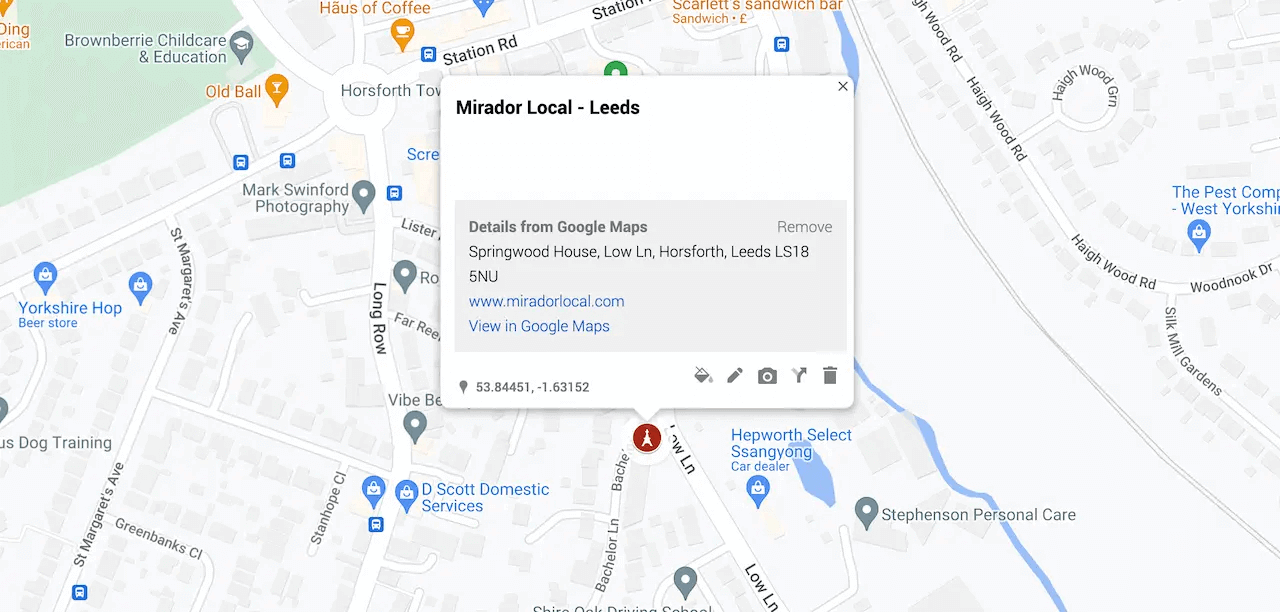Embedding Google Maps into a webpage: A comprehensive guide

Table of Contents
Google Maps is a powerful tool for displaying location-based information on your website. Whether you're running a business, showcasing travel destinations, or simply want to help visitors find your physical location, embedding Google Maps into your webpage can be incredibly useful. In this comprehensive guide, we'll walk you through the process of embedding Google Maps into various platforms, including WordPress, and address common issues that may arise.
Note this guide is for commercial websites, sites that get a larger number of views
Why embed Google Maps?
Before we delve into the technical aspects, it's essential to understand why embedding Google Maps can be beneficial for your website:
- Location Awareness: Google Maps provides a visual representation of your location, making it easier for visitors to understand your address and navigate to your physical location.
- Interactive Content: Embedded maps allow users to interact with your location data, such as zooming in/out, switching between map and satellite views, and getting directions.
- Enhanced User Experience: Adding Google Maps can improve the user experience by making your website more engaging and informative.
- Business Credibility: For businesses, displaying your location using Google Maps can build trust and credibility among potential customers.
Now, let's dive into the steps to embed Google Maps into different platforms.
Embedding Google Maps in HTML websites
Step 1: Get a Google Maps API key
To begin, you'll need a Google Maps API key. Follow these steps:
- Go to the Google Cloud Console.
- Create a new project or select an existing one.
- Enable the "Maps JavaScript API" for your project.
- Create an API key and configure any restrictions if necessary.
Step 2: Embed the map in your HTML
Now, you can embed the map into your HTML code:
<!DOCTYPE html>
<html>
<head>
<script src="https://maps.googleapis.com/maps/api/js?key=YOUR_API_KEY&callback=initMap" async defer></script>
<script>
function initMap() {
var map = new google.maps.Map(document.getElementById('map'), {
center: {lat: YOUR_LATITUDE, lng: YOUR_LONGITUDE},
zoom: YOUR_ZOOM_LEVEL
});
}
</script>
</head>
<body>
<div id="map" style="height: 400px; width: 100%;"></div>
</body>
</html>
Replace YOUR_API_KEY, YOUR_LATITUDE, YOUR_LONGITUDE, and YOUR_ZOOM_LEVEL with your specific information. This code creates a simple webpage with a Google Map embedded.
Embedding Google Maps in WordPress
Embedding Google Maps in WordPress is straightforward. You can either use a plugin or manually add it to your posts or pages.
Using a plugin (recommended)
- Log in to your WordPress dashboard.
- Install a Google Maps plugin like "WP Google Maps" or "Embed Google Map."
- Activate the plugin.
- Configure the plugin settings, including your API key.
- Create a new post or page and use the plugin's shortcode to embed the map.
Manually embedding
- In your Google Maps, click on the "Share" button.
- Select the "Embed a map" tab.
- Customize the map's size and options.
- Copy the provided HTML code.
- In your WordPress post or page, switch to the HTML editor and paste the code where you want the map to appear.
Common issues and troubleshooting
When embedding Google Maps, you might encounter some common issues:
- API Key Restrictions: Ensure your API key is correctly configured with the necessary restrictions. Google Maps APIs often require billing information for higher usage.
- Map Not Displaying: If the map doesn't appear, check for JavaScript errors in your browser's console. Ensure your API key is correct and that you've initialized the map properly.
- Mobile Responsiveness: Make sure your map is responsive on mobile devices by specifying appropriate width and height values or using responsive CSS.
- Slow Loading: Large maps with numerous markers or layers can slow down your website. Optimize your map's content and consider lazy-loading techniques.
- Browser Compatibility: Test your embedded map across different browsers to ensure compatibility. Google Maps may not work correctly in some older or less common browsers.
Here is some documentation if you want to read more from Google.

.jpg)